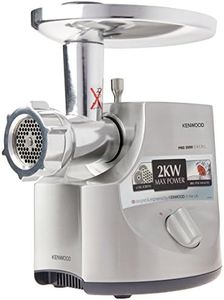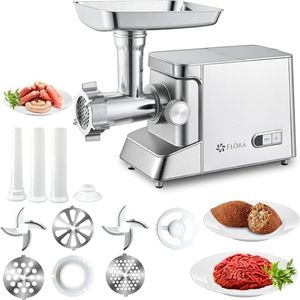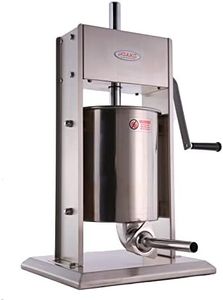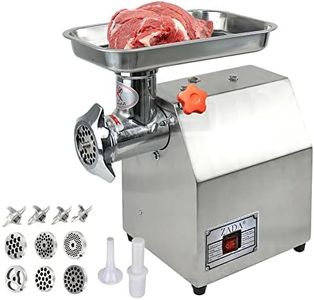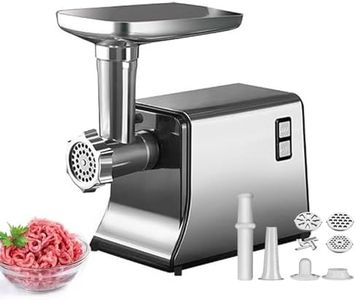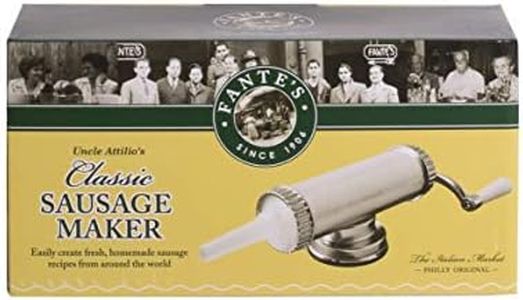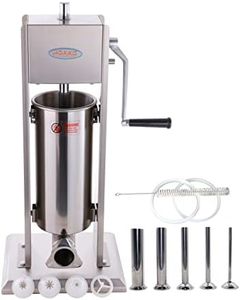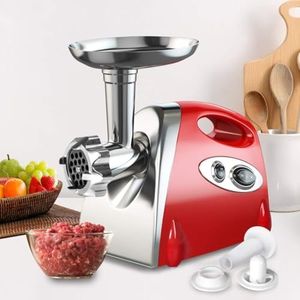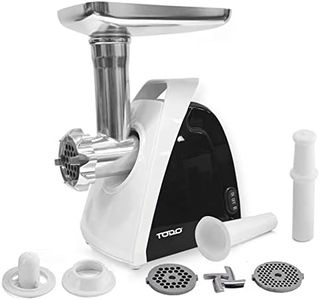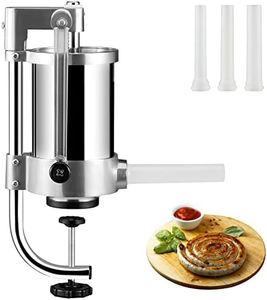We Use CookiesWe use cookies to enhance the security, performance,
functionality and for analytical and promotional activities. By continuing to browse this site you
are agreeing to our privacy policy
10 Best Electric Sausage Stuffers
From leading brands and best sellers available on the web.Buying Guide for the Best Electric Sausage Stuffers
Choosing the right electric sausage stuffer can make homemade sausage preparation much easier and faster. The key is to match the machine's features to how much sausage you plan to make, how often you'll use it, and how comfortable you are with cleaning and operating kitchen equipment. A good electric sausage stuffer should offer enough power for your typical batch size and be simple to use and maintain, especially if you plan to use it regularly. Focusing on the right balance of capacity, speed, and convenience will help you pick a machine you’ll actually enjoy using.CapacityCapacity refers to how much sausage mixture the machine can hold at one time, typically measured in pounds or liters. This matters because a larger capacity lets you make more sausages in one go, which is handy for big families or frequent gatherings, but takes up more storage space. Machines are often divided into small (about 3-5 lbs), medium (5-10 lbs), and large (10 lbs and above) capacities. Small capacities suit occasional users or small households, while larger capacities are better for batch cooking or frequent use. Consider how much sausage you usually want to make each time to find the best fit.
Motor PowerMotor power is the measure of how strong the machine’s engine is, often given in watts. A higher wattage generally means the machine can stuff sausage more quickly or handle denser mixtures without straining. Low-power motors (around 100-200W) work fine for soft mixtures and smaller batches, but may struggle with stiff mixes. Mid-range (200-300W) is suitable for most regular home use, while higher power (over 300W) is only needed if you’re making large quantities or using very firm mixtures. Think about the types of sausages you’ll make and pick a power level that won’t slow you down.
Nozzle/Tube Size OptionsNozzle or tube size refers to the diameter of the attachment that forms the sausages; different sizes mean you can make a variety of sausage types from slim snack sticks to thicker bratwursts. Machines usually come with several tubes, like small (around 10mm), medium (15-20mm), and large (over 20mm). If you want flexibility to make many styles of sausage, look for a model with multiple options. If you know you’ll stick to one kind, make sure the machine includes the right size.
Operation Control and Speed SettingsElectric sausage stuffers are powered by a motor but may give you different controls, such as variable speeds or a reverse function if the stuffing gets clogged. Lower speeds give greater accuracy and can help prevent casing breaks, while higher speeds are for faster production. If you’re new to sausage stuffing or want more control, look for machines with multiple or adjustable speed settings. Experienced users or those making large batches may prefer faster, single-speed models. Consider your experience level and the variety of sausages you want to make.
Ease of Cleaning and AssemblySausage stuffers need to be disassembled and cleaned after each use. The easier it is to take apart, clean, and reassemble, the more likely you’ll use it often. Look for parts that are dishwasher safe, simple locking mechanisms, and minimal nooks or crannies where meat can get trapped. If you dislike long cleanup times, prioritize ease of cleaning as a top feature.
Build Quality and MaterialsThe material used for the housing, gears, and tubes affects durability and food safety. Stainless steel is most common and tends to last longer, resist stains, and be easy to sanitize, while plastic parts may be lighter but less robust. Metal gears are also more durable than plastic ones. If you plan frequent or heavy-duty use, a sturdier, mostly metal construction will serve you best. Occasional users may do fine with composite materials as long as they’re rated food safe.
